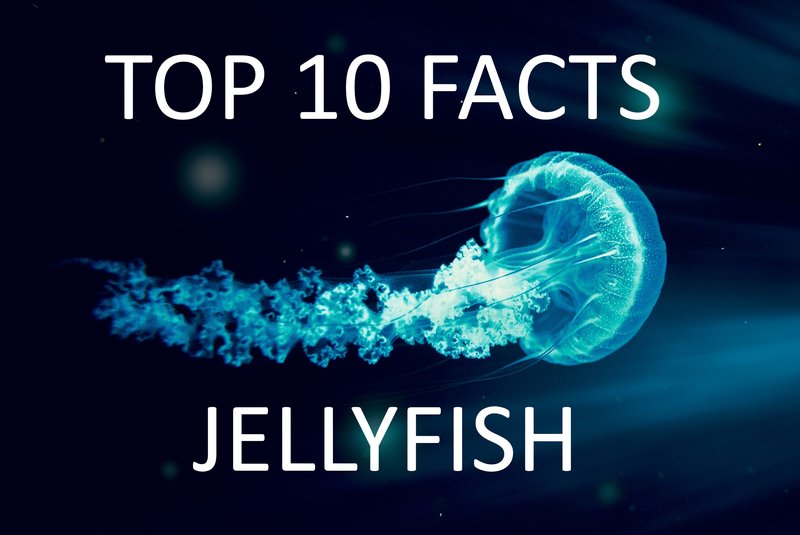
Jellyfish come in all shapes and sizes, each with its own unique attributes. Some glow in the dark, while others can be found in different colors, sizes, and habitats. Understanding jellyfish can open up a whole new world of marine biology, so let’s explore these creatures together. Grab your coffee, and let’s get started!
1. Ancient Origins
Jellyfish are often referred to as “living fossils.” They’ve been around for over 500 million years, predating dinosaurs by a long shot. To put that in context, they’ve existed longer than trees! This long history means that jellyfish have survived through mass extinctions, adapting their physiology to thrive in an ever-changing environment.
What’s fascinating is that their basic body structure hasn’t changed much throughout all those years. They’re mostly made of water—about 95%—and have a simple structure consisting of a gelatinous umbrella-shaped bell and tentacles that trail below. This simplicity has allowed them to flourish in various ocean conditions while other species may have come and gone.
So, next time you see a jellyfish, remember you’re looking at a creature that has weathered the storm of evolution and time. Isn’t that intriguing?
2. Unique Anatomy
Jellyfish have a body that’s vastly different from most animals. They lack a brain, heart, and bones, making them truly unique in the animal kingdom. Instead of a brain, they have a network of nerve cells, allowing them to respond to their environment without centralized thinking. It’s like they’re on autopilot!
The jellyfish’s body consists of three main parts: the bell, tentacles, and oral arms. The bell is the dome-shaped top that allows it to pulsate and move through the water. The tentacles, armed with stinging cells called nematocysts, are used for defense and capturing prey. When something brushes against these tentacles, they can release venom to immobilize their food.
This simple yet effective design allows jellyfish to be incredibly efficient hunters and survivors in their aquatic environments. You might find yourself wondering how such a minimalist creature can thrive so successfully!
3. Bioluminescence
Did you know some jellyfish can glow in the dark? This incredible ability is called bioluminescence. It’s not only fascinating but also functional. Jellyfish produce light through chemical reactions in their bodies, often as a defense mechanism. When threatened, they can create stunning light displays to confuse predators or attract mates.
The Aequorea victoria, commonly known as the Pacific jellyfish, is one of the most famous bioluminescent jellyfish. Its glow has been studied extensively, leading to scientific advancements, including the development of Green Fluorescent Protein (GFP), which has become a vital tool in molecular biology and genetics.
Imagine swimming in the ocean at night and witnessing a mesmerizing glow beneath the waves—that’s jellyfish lighting up their surroundings!
4. A Range of Sizes
When you think of jellyfish, you might envision small, delicate creatures drifting along the shore. But did you know jellyfish can vary drastically in size? The lion’s mane jellyfish, for example, is the largest species and can have tentacles that stretch over 100 feet long! That’s longer than a blue whale!
On the other end of the spectrum, you have tiny jellyfish like the sea gooseberry, which is only about the size of a pea. This range of sizes allows jellyfish to inhabit various ecosystems and fill different roles, from predators to prey.
This diversity in size means that jellyfish are not only fascinating but also vital to the health of marine ecosystems. Their size can affect everything from ocean currents to the food chain, and understanding their role helps us appreciate the complexity of ocean life.
5. Incredibly Resilient Creatures
Here’s the thing: jellyfish are some of the most resilient creatures on the planet. They can survive in extreme conditions, including high temperatures and even low oxygen levels. Some species can thrive in waters that would be unbearable for most other marine life.
One of the reasons for this resilience is their ability to undergo a process called reverse development. If a jellyfish is injured or threatened, it can revert back to an earlier life stage. Imagine going back to being a kid when life got tough! This ability is especially seen in the Turritopsis dohrnii, also known as the immortal jellyfish. It can cycle through its life stages over and over, effectively allowing it to avoid death in a way we can only dream about.
This incredible resilience offers insights into longevity and survival strategies in nature, sparking interest in scientists studying these intriguing creatures.
6. Jellyfish and Their Diet
Jellyfish might seem like they’re just drifting through the ocean, but they’re actually quite effective hunters. They primarily consume small fish, plankton, and other tiny marine organisms. Their tentacles play a crucial role in capturing prey—like an underwater net.
When prey comes into contact with their tentacles, the jellyfish releases venom that immobilizes the unfortunate creature. Then, it uses its oral arms to bring the food to its mouth. This process, while simple, shows us how adapted jellyfish are for survival in their aquatic habitats.
In a way, jellyfish can remind us of the importance of being adaptable and resourceful, traits we all might benefit from embracing in our daily lives.
7. Harmful or Helpful?
You might be wondering, are jellyfish harmful to humans? The answer is a bit of a mixed bag. Some jellyfish have venom that can cause painful stings, while others are harmless. The box jellyfish, for instance, is known for its potentially lethal sting, while species like the moon jellyfish are much less dangerous.
Despite their stings, jellyfish play a significant role in marine ecosystems. They serve as both predators and prey, helping maintain balance in oceanic environments. For example, small fish and other marine animals feed on jellyfish, while jellyfish help control zooplankton populations.
Understanding the dual nature of jellyfish helps us see them as more than just a threat. They’re important players in the grand scheme of marine life.
8. Jellyfish Blooms
You may have heard about jellyfish blooms—those sudden increases in jellyfish populations that can cause beaches to close and disrupt local fisheries. These blooms can result from various factors, including overfishing, climate change, and pollution.
When jellyfish populations explode, they can outcompete other marine animals for food and resources, raising concerns about ecological balance. The causes of these blooms are complex and often tied to human activity, highlighting the importance of understanding our impact on marine ecosystems.
Watching a jellyfish bloom can be both beautiful and alarming, reminding us of nature’s delicate balance. It’s a captivating phenomenon, but one that requires careful management and observation.
9. Reproduction: A Two-Stage Process
Jellyfish have an interesting reproductive cycle that’s quite different from most animals. They undergo both sexual and asexual reproduction. In one stage of their life, they reproduce sexually—producing eggs and sperm that create larvae. These larvae eventually settle on the ocean floor, where they transform into polyps.
From there, polyps can asexually reproduce, creating more jellyfish or medusae. It’s a fascinating double life that allows for greater population growth and adaptability. The cycle continues, producing new jellyfish that will one day join the swaying dance of their ancestors in the ocean.
This two-stage reproductive process showcases how jellyfish thrive and adapt to their environments, ensuring their survival over the millennia.
10. Cultural Significance
Jellyfish have also made their way into art, literature, and even cuisine across various cultures. From ancient myths to modern art, these creatures have captured human imagination. In Japanese cuisine, jellyfish are considered a delicacy and are often served in salads or pickled.
Their ethereal beauty has inspired artists, and they often symbolize the delicate balance of life in literature. You might find jellyfish referenced as metaphors for ghostly memories or the vastness of the ocean’s mysteries.
By exploring their cultural significance, we realize that jellyfish are not just fascinating scientifically—they’re also woven into the fabric of human creativity and expression.
Conclusion
Jellyfish are truly remarkable creatures that challenge our perceptions of life in the ocean. From their ancient origins to their unique anatomy and cultural significance, they offer a glimpse into the complexities of marine ecosystems. Whether you’re coming across a glowing jellyfish at night or learning about their role in the ocean, these creatures remind us of the beauty and wonder found beneath the waves.
So, the next time you’re at the beach or watching a documentary, take a moment to appreciate the incredible world of jellyfish. They’re more than just a pretty sight—they’re a vital part of our planet’s intricate web of life.

